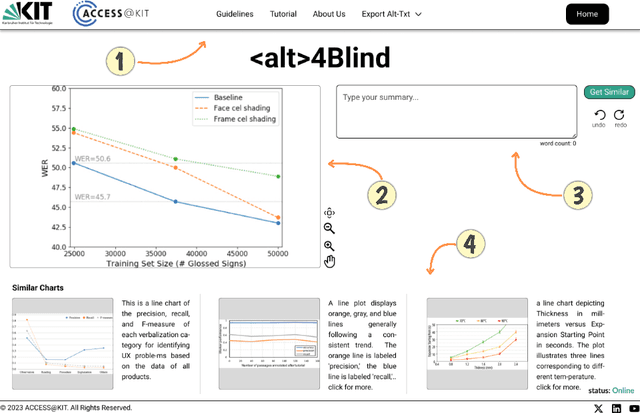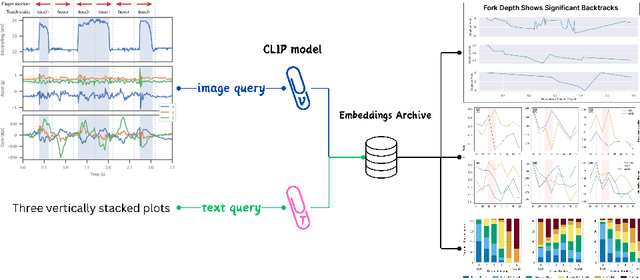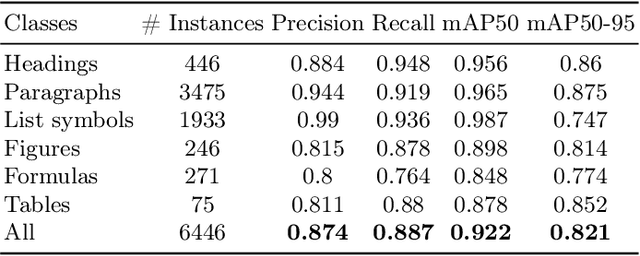Karin Muller
Alt4Blind: A User Interface to Simplify Charts Alt-Text Creation
May 29, 2024

Abstract:Alternative Texts (Alt-Text) for chart images are essential for making graphics accessible to people with blindness and visual impairments. Traditionally, Alt-Text is manually written by authors but often encounters issues such as oversimplification or complication. Recent trends have seen the use of AI for Alt-Text generation. However, existing models are susceptible to producing inaccurate or misleading information. We address this challenge by retrieving high-quality alt-texts from similar chart images, serving as a reference for the user when creating alt-texts. Our three contributions are as follows: (1) we introduce a new benchmark comprising 5,000 real images with semantically labeled high-quality Alt-Texts, collected from Human Computer Interaction venues. (2) We developed a deep learning-based model to rank and retrieve similar chart images that share the same visual and textual semantics. (3) We designed a user interface (UI) to facilitate the alt-text creation process. Our preliminary interviews and investigations highlight the usability of our UI. For the dataset and further details, please refer to our project page: https://moured.github.io/alt4blind/.
ChartFormer: A Large Vision Language Model for Converting Chart Images into Tactile Accessible SVGs
May 29, 2024Abstract:Visualizations, such as charts, are crucial for interpreting complex data. However, they are often provided as raster images, which are not compatible with assistive technologies for people with blindness and visual impairments, such as embossed papers or tactile displays. At the same time, creating accessible vector graphics requires a skilled sighted person and is time-intensive. In this work, we leverage advancements in the field of chart analysis to generate tactile charts in an end-to-end manner. Our three key contributions are as follows: (1) introducing the ChartFormer model trained to convert raster chart images into tactile-accessible SVGs, (2) training this model on the Chart2Tactile dataset, a synthetic chart dataset we created following accessibility standards, and (3) evaluating the effectiveness of our SVGs through a pilot user study with an refreshable two-dimensional tactile display. Our work is publicly available at https://github.com/nsothman/ChartFormer .
ACCSAMS: Automatic Conversion of Exam Documents to Accessible Learning Material for Blind and Visually Impaired
May 29, 2024

Abstract:Exam documents are essential educational materials for exam preparation. However, they pose a significant academic barrier for blind and visually impaired students, as they are often created without accessibility considerations. Typically, these documents are incompatible with screen readers, contain excessive white space, and lack alternative text for visual elements. This situation frequently requires intervention by experienced sighted individuals to modify the format and content for accessibility. We propose ACCSAMS, a semi-automatic system designed to enhance the accessibility of exam documents. Our system offers three key contributions: (1) creating an accessible layout and removing unnecessary white space, (2) adding navigational structures, and (3) incorporating alternative text for visual elements that were previously missing. Additionally, we present the first multilingual manually annotated dataset, comprising 1,293 German and 900 English exam documents which could serve as a good training source for deep learning models.
 Add to Chrome
Add to Chrome Add to Firefox
Add to Firefox Add to Edge
Add to Edge